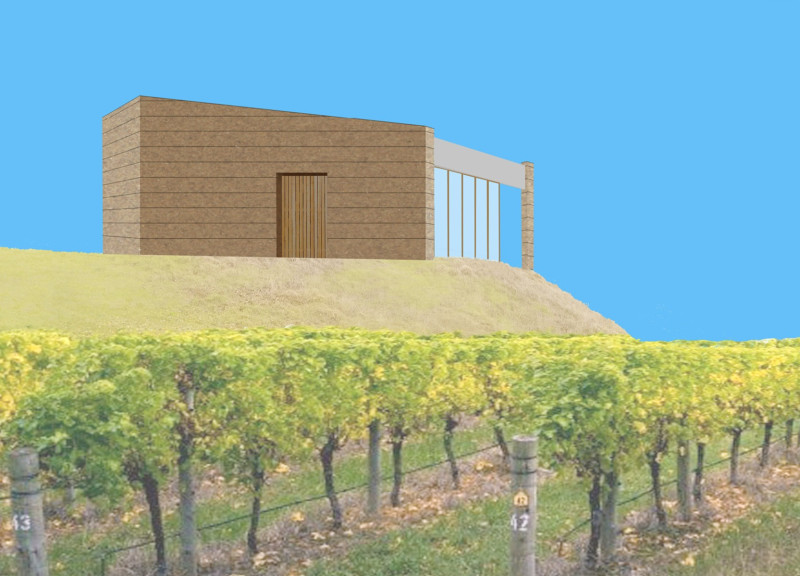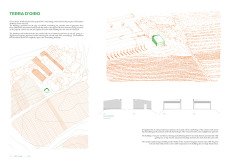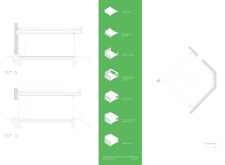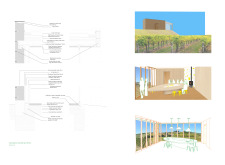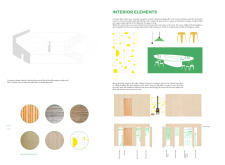5 key facts about this project
At its core, the project is envisioned to serve as a multifunctional space, accommodating activities that range from communal gatherings to private interactions. The design emphasizes connectivity, fostering a sense of community and belonging among its users. Each area within the structure is meticulously planned to ensure a seamless flow, from the inviting common spaces that encourage interactions to the more private zones designed for reflection and relaxation. This balance between communal and personal environments demonstrates a core principle of modern architectural design—creating spaces that meet diverse needs while remaining accessible and inviting.
Materiality plays a crucial role in the project, with a selection of elements that not only contribute to the aesthetic appeal but also enhance sustainability. Concrete serves as the primary structural component, providing necessary strength while allowing for innovative design solutions. Glass is thoughtfully utilized throughout, promoting transparency and inviting natural light into the interior, which helps to connect the indoor spaces with the rich outdoor environment. The warmth of timber is employed in various areas, adding a tactile quality that contrasts beautifully with the more industrial materials. This use of natural elements is not solely aesthetic; rehabilitating the environment through sustainable materials speaks to a broader commitment to ecological responsibility.
Unique design approaches are evident in the project’s facades, which leverage both texture and light manipulation to create dynamic visual interest. The interplay between solid and void, achieved through recessed balconies and strategically placed windows, allows for varying degrees of privacy and transparency that change with the time of day. Incorporating natural stone into the building’s exterior links the structure visually to the local geology, creating a sense of place that resonates with its context.
Furthermore, the integration of landscaping is a vital aspect of the design. Thoughtfully selected native plants enhance the indigenous character of the environment while minimizing water usage, showcasing a commitment to sustainability. The outdoor spaces are designed not just for visual appeal but also to promote biodiversity and offer areas for relaxation and engagement with nature.
In terms of sustainable design practices, the project implements several strategies that exemplify a forward-thinking architectural approach. Solar panels contribute to energy efficiency, addressing reduced reliance on conventional energy sources. The incorporation of rainwater harvesting systems illustrates a practical response to water conservation while enhancing the overall efficiency of the building. Additionally, passive design principles, including optimal orientation and the use of thermal mass, regulate internal temperatures naturally, reducing the need for mechanical heating and cooling systems.
The overall design reflects a modern architectural ethos that values community, sustainability, and thoughtful engagement with the environment. Every detail, from the choice of materials to the arrangement of spaces, has been carefully considered to create an inviting and functional environment that serves the diverse needs of its users.
For those interested in delving deeper into the nuances of this architectural project, exploring the architectural plans, sections, designs, and the underlying ideas will provide further insights into how each element contributes to the overall vision. This project not only serves its immediate function but also stands as a testament to the possibilities inherent in contemporary architecture.


